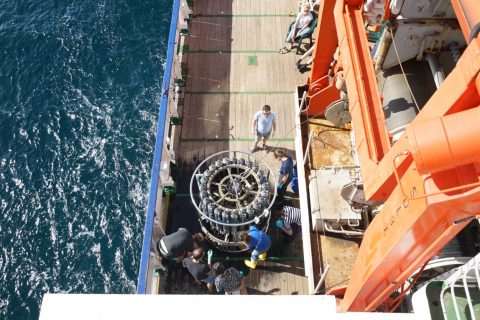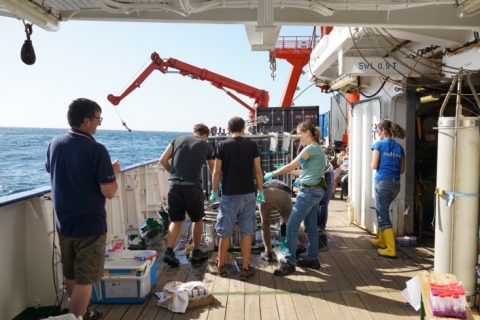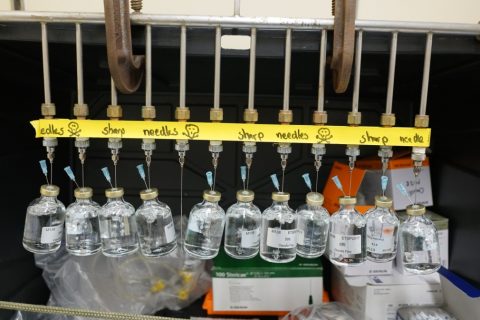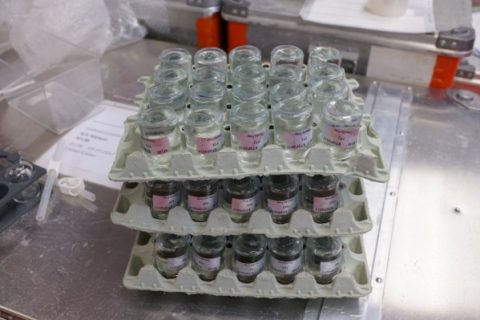Following this attitude we are not getting tired of collecting water. After 17 days on sea we have sampled 80 CTD casts containing roughly 19200 L of water. We usually collect the water from as deep as 2000m up to the surface. The water from each single depth gets analyzed for standard oceanographic parameters like oxygen, ammonium, nitrate, nitrite, silicate and phosphate, but also trace gases (e.g. nitrous oxide, methane) and trace metals (e.g. iron). The water demand is always huge and so sampling the CTD is always a big gathering event. Each scientist has its own purpose for the water; some filter it, some freeze it and some incubate it, like I do.


I am a marine biogeochemist interested in the marine nitrogen cycle. During this cruise I am investigating the regulation of nitrous oxide production. How do oxygen and organic matter influence the production of nitrous oxide from different nitrogen sources like nitrate, nitrite and ammonium? The Eastern Tropical South Pacific (ETSP) is known for its large anoxic areas, called oxygen minimum zones and is therefore the perfect spot for my purpose. I collect the water into 50mL serum vails which have to be closed without having a bubble inside…sometimes this can be quite challenging. With the help of experienced trace gas sampling people like Damian and Mingshuan even sampling 200 bottles from one CTD cast is no problem. After that I disappear into the cold room which is set to 12°C, close to in situ temperatures. I purge my bottles to make sure that samples from the anoxic depths are really anoxic and after that the incubation can start. The last remaining challenge is: bringing back the bottles to the lab safe and sound, for which we have the perfect packing with the great support of the ship’s cooks and everyone eating eggs in all kinds of versions. Keep it up. 🙂


Claudia Frey, Princeton University.